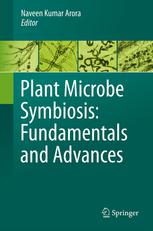

Most ebook files are in PDF format, so you can easily read them using various software such as Foxit Reader or directly on the Google Chrome browser.
Some ebook files are released by publishers in other formats such as .awz, .mobi, .epub, .fb2, etc. You may need to install specific software to read these formats on mobile/PC, such as Calibre.
Please read the tutorial at this link: https://ebookbell.com/faq
We offer FREE conversion to the popular formats you request; however, this may take some time. Therefore, right after payment, please email us, and we will try to provide the service as quickly as possible.
For some exceptional file formats or broken links (if any), please refrain from opening any disputes. Instead, email us first, and we will try to assist within a maximum of 6 hours.
EbookBell Team

4.7
56 reviewsPlant microbe interaction is a complex relationship that can have various beneficial impacts on both the communities. An urgent need of today’s world is to get high crop yields in an ecofriendly manner. Utilization of beneficial and multifaceted plant growth promoting (PGP) microorganisms can solve the problem of getting enhanced yields without disturbing the ecosystem thus leading to sustainability. For this to achieve understanding of the intricate details of how the beneficial microbes form associations with the host plant and sustain that for millions of years must be known. A holistic approach is required wherein the diversity of microbes associated with plant and the network of mechanisms by which they benefit the host must be studied and utilized. ‘Plant Microbe Symbiosis – Fundamentals and Advances’ provides a comprehensive understanding of positive interactions that occur between plant and microorganisms and their utilization in the fields. The book reviews the enormous diversity of plant associated microbes, the dialog between plant-microbes-microbes and mechanisms of action of PGP microbes. Utilization of PGPRs as nutrient providers, in combating phytopathogens and ameliorating the stressed and polluted soils is also explained. Importantly, the book also throws light on the unanswered questions and future direction of research in the field. It illustrates how the basic knowledge can be amalgamated with advanced technology to design the future bioformulations.